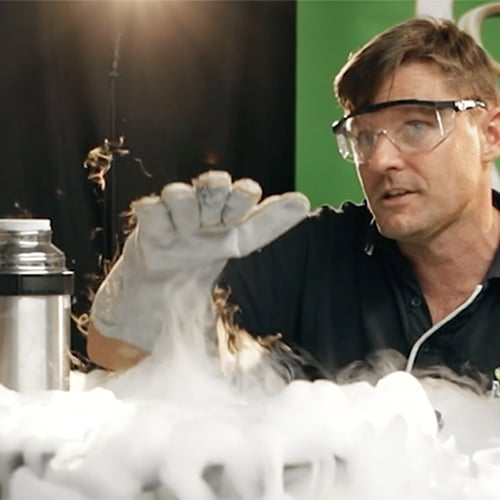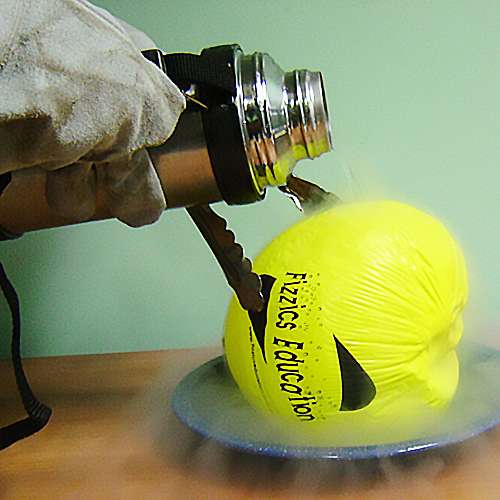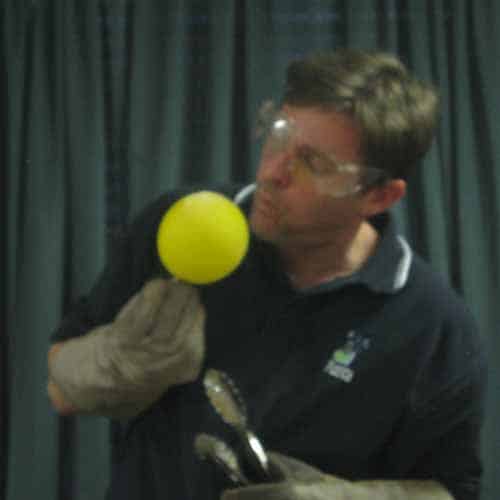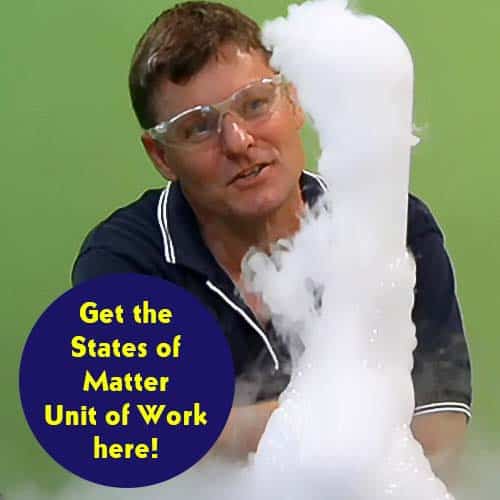You will need:
NOTHING. Do not try this at home or school unless you have formal training. You are also unlikely to have liquid nitrogen at home, or in your school.

School science visits since 2004!
– Curriculum-linked & award-winning incursions.
– Over 40 primary & high school programs to choose from.
– Designed by experienced educators.
– Over 2 million students reached.
– Face to face incursions & online programs available.
– Early learning centre visits too!
Why Does This Happen?
Charles’s Law says that for each 1-degree drop in temperature an ideal gas will drop at the same rate in volume. (i.e. it’s proportional). Liquid nitrogen is – 196 degrees Celsius and causes the air inside the balloon to reduce in volume as it cools very quickly. As the air inside the balloon drops in volume, it exerts less pressure on the inside of the balloon. The air outside of the balloon has much higher pressure compared to the cold air inside the balloon… this pressure difference allows high-pressure air outside of the balloon to ‘squash’ the balloon. When you blow on the ‘squashed balloon’, the air inside warms up again and in doing so increases in pressure and is able to get bigger again!
Variables to test
- Does this work with ice?
- What about dry ice?
- Will you see this effect with your freezer?
From colour changes to slimy science, we’ve got your kitchen chemistry covered!
Get in touch with FizzicsEd to find out how we can work with your class.
Liquid Nitrogen Show
Years K to 6
Maximum 60 students
Science show
45 minutes
Online Class Available
STEM Full Day Accelerator - Primary
Designed from real classroom experiences, this modular day helps you create consistently effective science learning that directly address the new curriculum with easily accessible and cost-effective materials.






























Comments